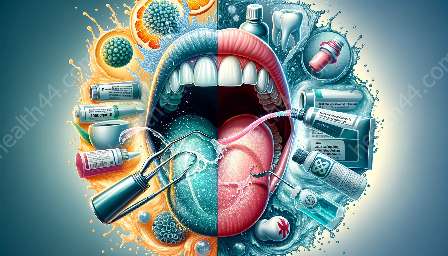Chlorhexidine mouthwash is a commonly used antimicrobial agent that can help maintain oral hygiene and treat certain mouth conditions. However, like any medication, it may have potential side effects that users should be aware of. In this guide, we'll explore the possible side effects of chlorhexidine mouthwash and provide tips on how to minimize these effects.
Potential Side Effects
1. Staining: One of the most common side effects of chlorhexidine mouthwash is staining of the teeth, tongue, and oral tissues. This staining can be noticeable and may contribute to cosmetic concerns. It is important to note that staining is generally reversible and can be reduced by proper oral hygiene practices, such as regular brushing and professional cleanings.
2. Taste Alteration: Some individuals may experience changes in taste perception, such as a bitter or metallic taste, while using chlorhexidine mouthwash. This side effect is usually temporary and resolves after discontinuation of the mouthwash.
3. Oral Irritation: In some cases, chlorhexidine mouthwash may cause oral irritation, including dryness, burning sensation, or mucosal ulceration. If these symptoms occur, it is important to seek advice from a healthcare professional to determine the appropriate course of action.
Minimizing Side Effects
To minimize the potential side effects of chlorhexidine mouthwash, consider the following tips:
- Follow Instructions: Always use the mouthwash according to the instructions provided by your healthcare provider or as indicated on the product label.
- Good Oral Hygiene: Maintain good oral hygiene practices, including regular brushing, flossing, and professional dental cleanings, to help prevent and reduce staining.
- Rinse Dilution: If staining or taste alteration is bothersome, consider diluting the chlorhexidine mouthwash with water, as recommended by your dentist or hygienist.
- Avoid Staining Agents: Limit the consumption of staining agents, such as coffee, tea, and tobacco, while using chlorhexidine mouthwash to minimize the risk of additional staining.
- Discuss Alternatives: If you experience significant side effects or are concerned about their impact, discuss alternative oral hygiene products or treatments with your dentist or healthcare provider.
Conclusion
Chlorhexidine mouthwash is an effective antimicrobial agent that can play a valuable role in oral health and hygiene. Understanding its potential side effects and knowing how to minimize them is important for users to make informed decisions about its use. By following good oral hygiene practices and seeking guidance from healthcare professionals, individuals can manage and mitigate the potential side effects of chlorhexidine mouthwash.









